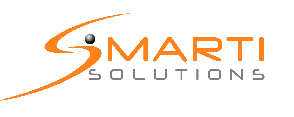It's nice to see other professionals expound upon themes you feel are important. Small and mid-sized agencies wanting to stay competitive should take note of some key observations made by top professionals at Ad Age's Small Agency Conference in Minneapolis.
1) People make the agency - David Bell, former CEO of Interpublic and Michael Keller, CEO of Pearson Candy Co., emphasized matching hiring policies with an agency's culture. Bell said, "If you're going to grow an agency, build the culture first." Decide who you are and who you want to be as an agency. Knowing your culture helps you add personnel who accentuate and strengthen it rather than try to take it in another direction. He stressed, "Bad cultural influences will ruin agencies faster than anything." The wrong person, especially in a senior management position, creates a drag on the agency's momentum, poisons the work atmosphere and creates conflicts with clients. It's less expensive to pass on a potential hire than have to buy your way out of trouble later.
2) Small improvements - Most of us would be doubtful about seeing a 100% increase in client base, market share or earnings within 70 days. We doubt because we forget the power of compounded incremental change. Taking the philosophy of Bradley Wiggins, who attained a historic Tour de France win, we only need a 1% improvement each day to reach that goal. Breaking a huge goal up into a series of manageable, attainable goals we meet each day means constant improvement and make them more likely to last when the final goal is met.
3) Befriend agency competitors - A questioner asked about the advisability of small agencies working with other agencies, such as those with expertise in specific areas like PR or media, when presenting a pitch to potential clients. An agency consultant answered that collaborations between agencies could be very effective in the right circumstances. Rather than revealing a weakness to a client, the agency demonstrates its honest assessment of what it can deliver, which clients appreciate, while offering a ready made solution for a comprehensive campaign. It requires extensive meetings with the partnering agency, but shows an agency's ability to work effectively with other teams.
4) Take Risks - Michael Sprague, VP of Marketing and Communications for Kia, presented a concrete example of how risks, something he's pushed into the carmaker's marketing culture with the assistance of his agencies, can pay off. Three years ago Kia launched a campaign targeted at millennials that resulted in a massive sales spike. Since 2008, Kia has seen a 78% sales increase. The risk? Robotic hamsters. "Continue to push the envelope with your clients," he said. "There are no bad ideas. ... After all, we came up with hamsters."
5) Brand your agency - David Bell pointed out the irony that while agencies do a fantastic job of positioning their clients, the do a "horrible" job of doing the same for themselves. When you go before a client, you need not only demonstrate your ability to get their brand out front, but also make a clear statement about your brand. How is it going to stand out against the others? What does your agency bring to a campaign the others can't? He said agencies need to provide "proof points" that illustrate their position. If you don't, your agency is going to be indistinguishable from all the others. If you can't present your own brand effectively, then how can you claim effectiveness in presenting their brand?
I think the last point encompasses the others. In order to compete, smaller agencies must sell their brand. Their brand, who they are, is created by a common culture that runs from top to bottom and includes the confidence to make incremental changes, work with other professionals and push the envelope for their clients.
For more insights on Ad Age’s Small Agency Conference, see the report.
Subscribe to:
Post Comments (Atom)



No comments:
Post a Comment